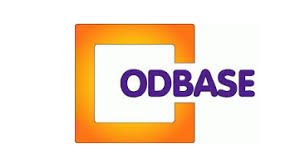 A scientific paper entitled “Semantically Enhanced Interoperability in Health Emergency Management” has been authored by UBITECH and is presented at the 17th International Conference on Ontologies, DataBases, and Applications of Semantics for Large Scale Information Systems (ODBASE’18) that is part of the OnTheMove Federated Conferences & Workshops, hosted between October 22-26, 2018 in Valletta, Malta. In this paper, Danae Vergeti, Dimitris Ntalaperas, and Dimitris Alexandrou propose the HERMES Semantic Model that consists of an ontological representation of the conceptual model of the Health Emergency Management domain and aims at: a) providing an integral conceptual model of Health Emergency Management covering all the involved knowledge domains and, b) addressing the aforementioned interoperability and integration issues. HERMES reuses existing ontologies and offers a new upper model, a set of vertical models and a data facet. The model is used by a specific mechanism which imports data from the various resources in order to provide an integrated and homogenized view of the data. The final harmonized data may be used by various incident management platforms to assist in decision making during an emergency.
A scientific paper entitled “Semantically Enhanced Interoperability in Health Emergency Management” has been authored by UBITECH and is presented at the 17th International Conference on Ontologies, DataBases, and Applications of Semantics for Large Scale Information Systems (ODBASE’18) that is part of the OnTheMove Federated Conferences & Workshops, hosted between October 22-26, 2018 in Valletta, Malta. In this paper, Danae Vergeti, Dimitris Ntalaperas, and Dimitris Alexandrou propose the HERMES Semantic Model that consists of an ontological representation of the conceptual model of the Health Emergency Management domain and aims at: a) providing an integral conceptual model of Health Emergency Management covering all the involved knowledge domains and, b) addressing the aforementioned interoperability and integration issues. HERMES reuses existing ontologies and offers a new upper model, a set of vertical models and a data facet. The model is used by a specific mechanism which imports data from the various resources in order to provide an integrated and homogenized view of the data. The final harmonized data may be used by various incident management platforms to assist in decision making during an emergency.
In particular, HERMES provides an ontological representation of the Health Emergency Management domain in order to provide a common reference schema for data harmonization and semantic interoperability between the various stakeholders during a health emergency. Currently, semantic models for Health Emergency Management rely mainly on interoperability standards which ensure compatibility of the exchanged messages between the various incident management platforms. HERMES provides an integral ontology which is aligned with the interoperability standards and in the same time covers the wide spectrum of the domain of health emergency extending entities such as the emergency event, health status, resources and their roles and importing entities such as meteorology, infrastructure, geography. The model provides a novel upper model and enhances each entity with a set of classifications and a data facet based on bibliography and other health standards.
In this way, semantic interoperability is achieved between the stakeholders regardless the schema of the data that they use. A data harmonization procedure is implemented using semantic mappings between the schema of the data and HERMES. Thus, all data is provided and queried under a common schema. The evaluation of HERMES focused on the efficient use of the model for data harmonization and semantic interoperability. The results of the evaluation process prove the correct approach of the model since all the simulation data were smoothly harmonized. Finally, incident management data were extended with additional information that is not provided by the EDXL standard such as weather information, population and other information of specific areas.


